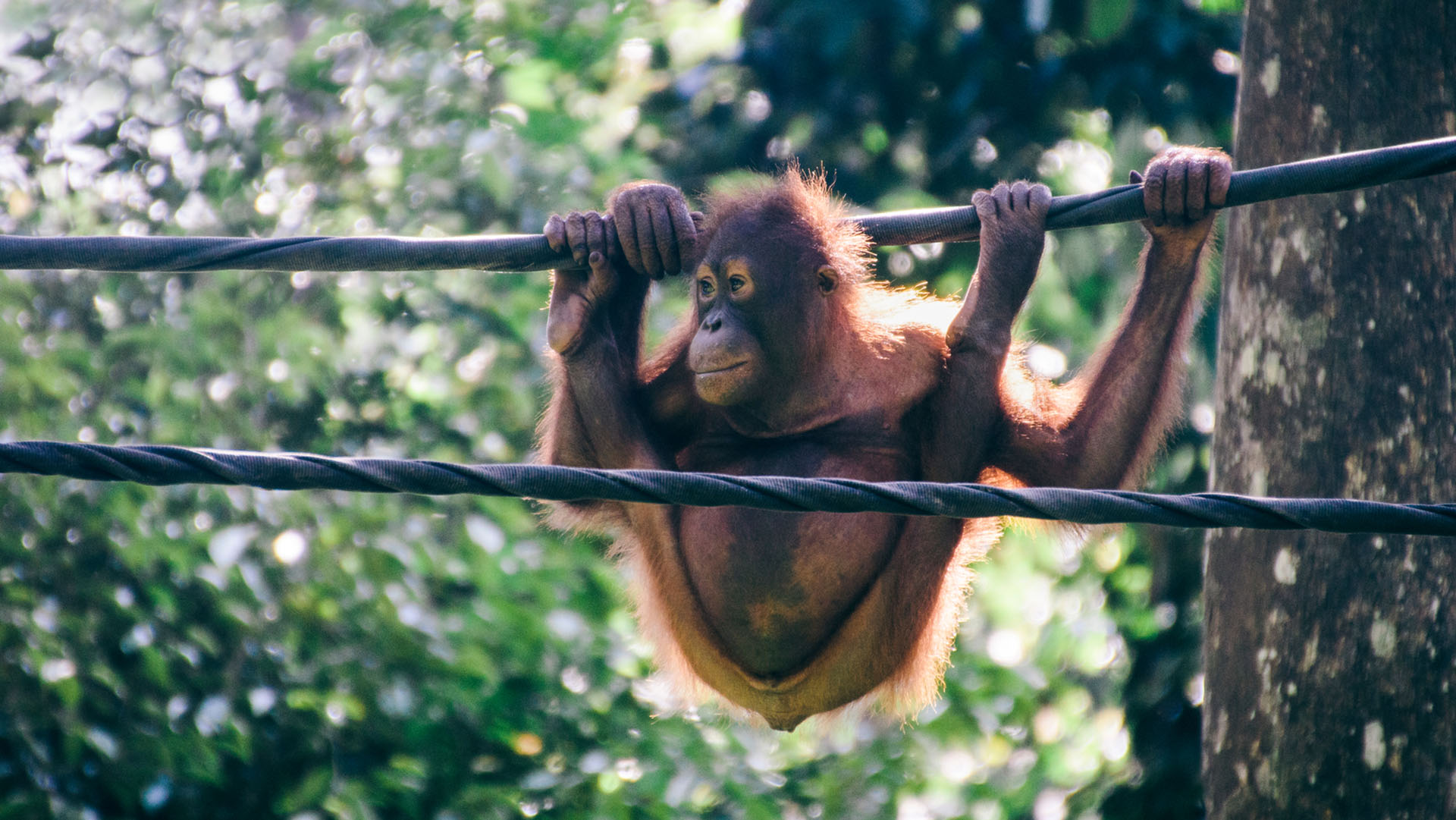-
Malaysia’s great rainforests are home to thousands of species of animals not found anywhere else in the world. This rainforest however, is slowly disappearing as ground is cleared for development, mining and farming purposes.
Whilst this is good news for Malaysian people, providing new industries, development, and jobs, some animal habitats are under threat and fragmented as roads are built through. Wildlife is also at risk from illegal hunting and disgruntled farmers killing animals who eat their crops.
Luckily there are plenty of dedicated conservation efforts happening in Malaysia, rescuing and relocating animals to areas far away from the pressures of development. These projects are also great places for you to catch a rare glimpse of some of Malaysia’s fascinating and unique animal life, whilst helping out some very ethical projects.
Here we’ve picked out three animals under threat, and the ongoing conservation efforts to preserve them.
Kuala Gandah Elephant Sanctuary
The Borneo elephant is much smaller than its African and other Asian relatives, sometimes referred to as a pygmy elephant, as its large features can seem out of proportion with its body. Wild populations are still found in peninsular Malaysia, though estimates put their official numbers at around 1200 in the wild.
Kuala Gandah Elephant Sanctuary is one of Malaysia’s most popular elephant sanctuaries and is an easy drive from Kuala Lumpur. As well as an excellent education centre, visitors can also feed the elephants. Kuala Gandah is dedicated to rehabilitating and rehoming elephants, and not forcing them to perform. This is why visitors can’t ride the elephants, as is common in other parts of the world; all the elephants at Kuala Gandah are truly wild animals. Kuala Gandah is open to the public and offers free entry, though the sanctuary will welcome any donations you wish to make.
Sepilok Orangutan Rehabilitation Centre
One of the most well-known species of primate, the orangutan is distinctive with its long limbs, red-orange hair, and large fleshy cheeks. In the Malay language, Orangutan means “man of the forest”, which is fitting as it’s one of our closest genetic relatives, and highly intelligent. They’re also classified as critically endangered.
Malaysia has many parks and attractions that feature orangutan photo opportunities for tourists, but one of the best facilities doing real rehabilitation work is Sepilok Orangutan Rehabilitation Centre in Sabah. Sepilok was established with the aim of returning orphaned, injured, and displaced orangutans to the wild, via their 4300 hectare rainforest reserve. Here visitors can view the orangutans in their treetop homes via a boardwalk into the rainforest canopy, as well as watch daily feeding sessions with the rangers.
Selangor Dusun Wildlife Conservation Center
The Malayan tapir is one of five species of tapir worldwide, and the only one found outside of the Americas. Their timid nature and excellent senses of hearing and smell means that they’ve rarely been seen by humans outside of captivity.
In the past, numbers of wild populations were generally overestimated due to the tapirs’ preference for solitude in the wild, but current estimates put their numbers at about 2000.
The Malayan Tapir has distinctive black and white markings that surprisingly help it blend into its natural habitat – it can look more like a rock than a large animal! They can grow up to 2.5 metres in length, and weigh up to 550kg.
The Malayan tapir is now classified as endangered, and is suffering from encroaching human threats to its environment, just like the Borneo elephant and orangutan. The University of Copenhagen is involved in a joint conservation effort with the Malaysian Department of Wildlife and National Parks at Selangor Dusun Wildlife Conservation Center 120km north of Kuala Lumpur. Here visitors can learn more about these strange creatures, see a dozen tapir involved in a captive breeding program, as well as feed the animals.
If you’re a nature-lover planning a big new adventure into the wild jungles of Malaysia, the savannahs of Africa, or even the deserts of Mongolia, make sure you do it properly.
You can make a plan for everything, but overseas travel always has a way of throwing curveballs you would never expect. Make sure you protect yourself, your loved ones, and your belongings with a comprehensive travel insurance policy from Medibank. Get a quote today.
3 ethical conservation projects to check out in Malaysia

-
How to set up your bedroom for better sleep
The sleep experts share some secrets.
-
5 healthy habits (and how to keep them)
New Year's resolutions are easy to make and hard to keep. Discover how to make healthy habits for 2024.
-
How to feel more connected this festive season
Feeling stressed or lonely this festive season?
-
Life’s a beach
If you want to take it easy at the beach, start by making the trip easier on yourself. Cameron Williams reveals the discoveries that made his time at the beach more enjoyable.
-
Learn how small bursts of movement can have a positive impact on employee wellbeing
-
How to do a digital detox
Reduce screen time with a digital detox, and improve your mental health and wellbeing.
Subscribe to receive the best from Live Better every week. Healthy recipes, exercise tips and activities, offers and promotions – everything to help you eat, move and feel better.
By clicking sign up I understand and agree to Medibank's privacy policy






